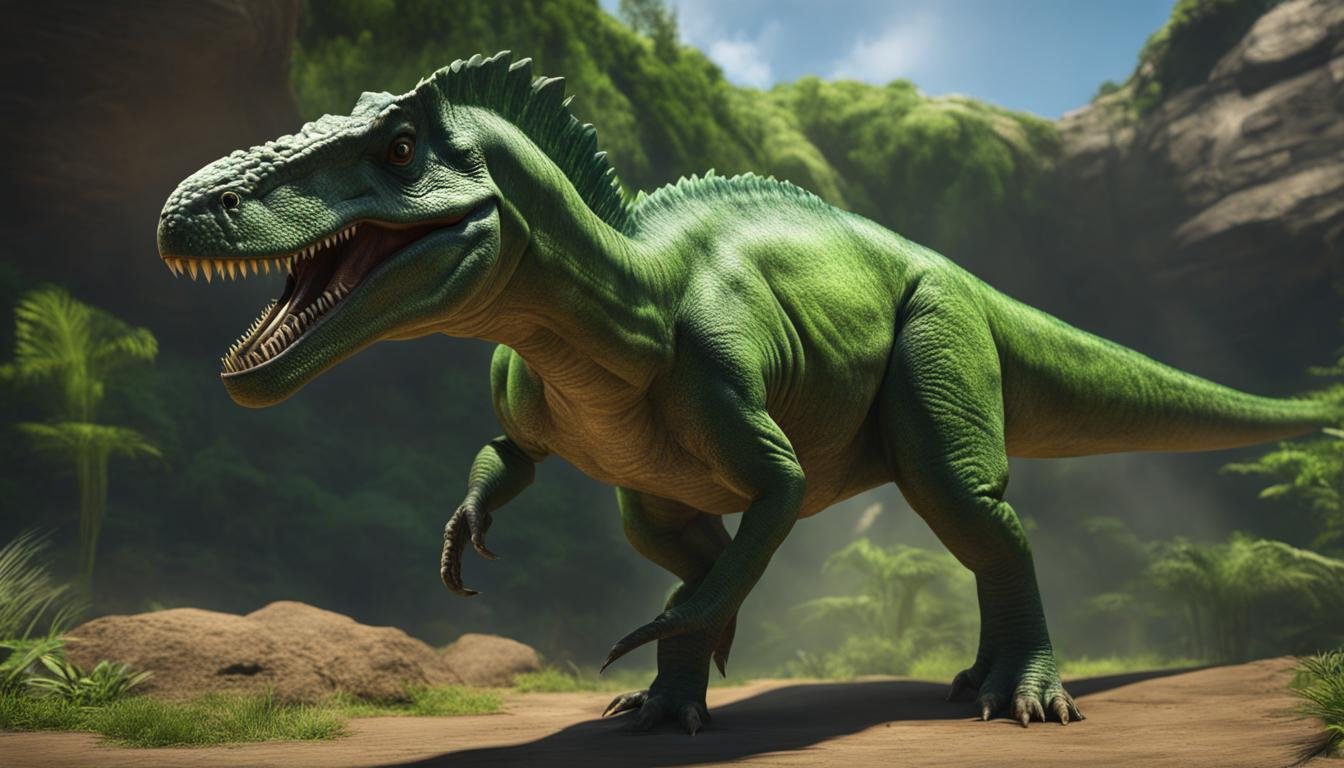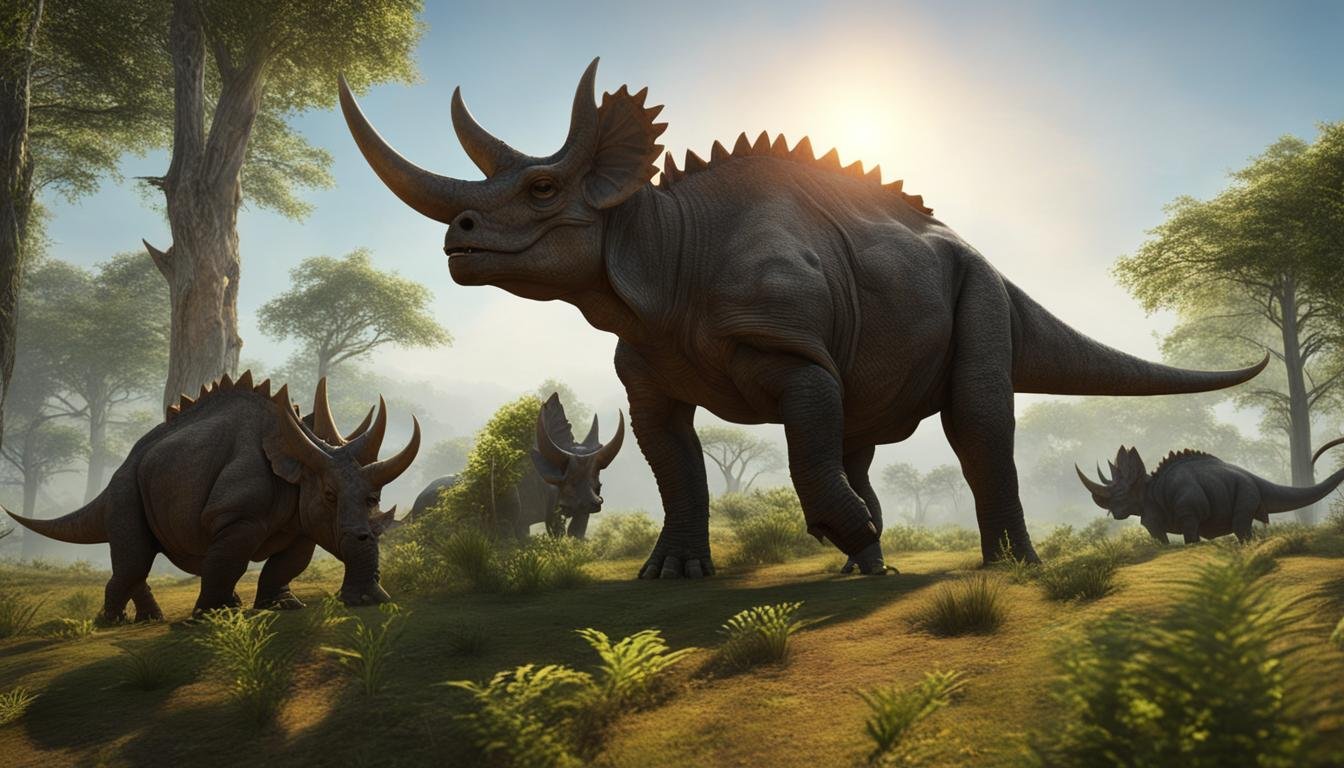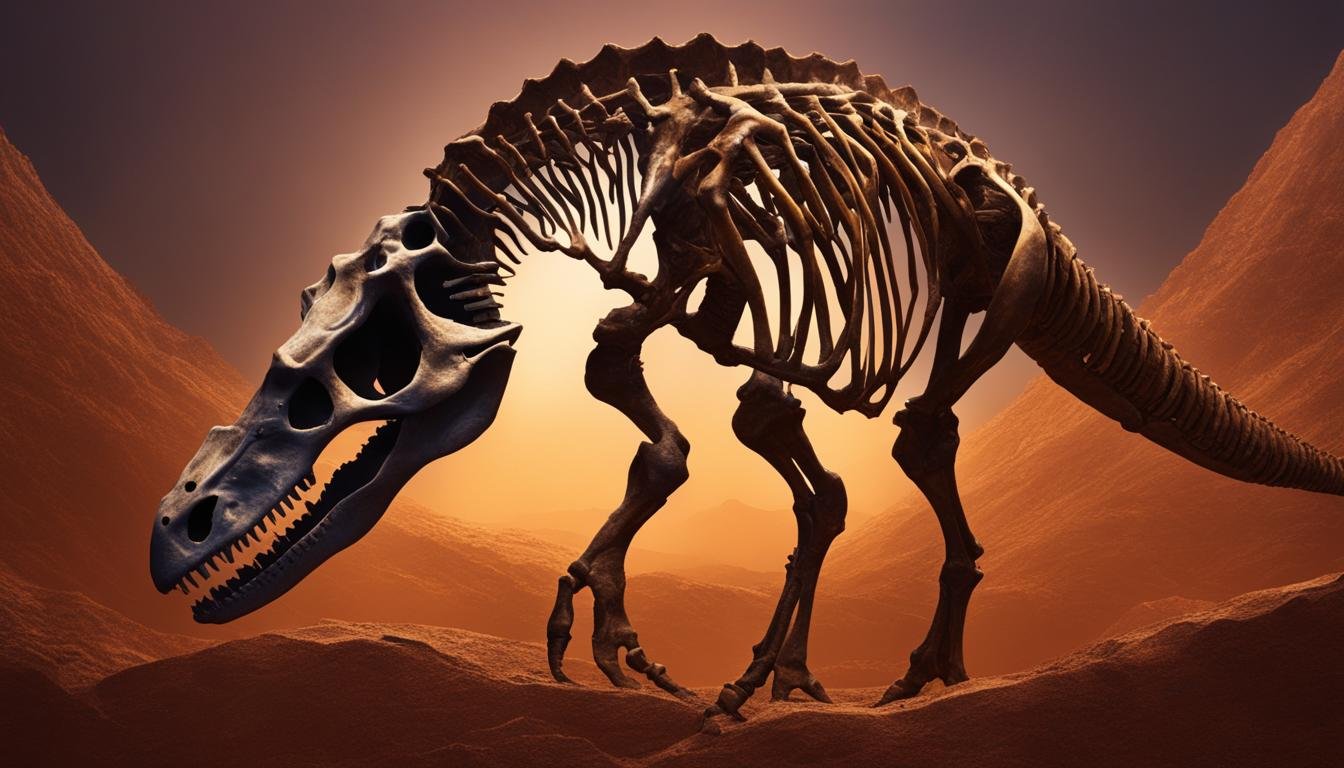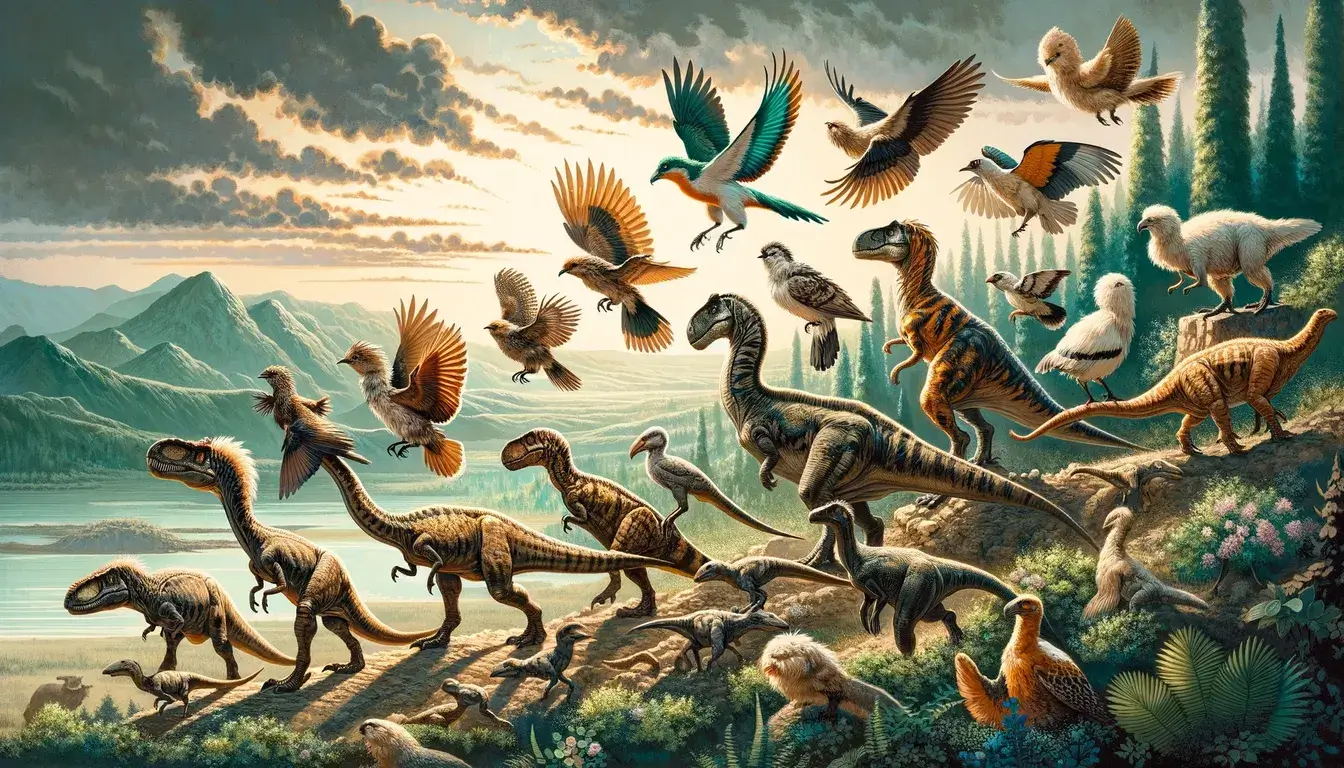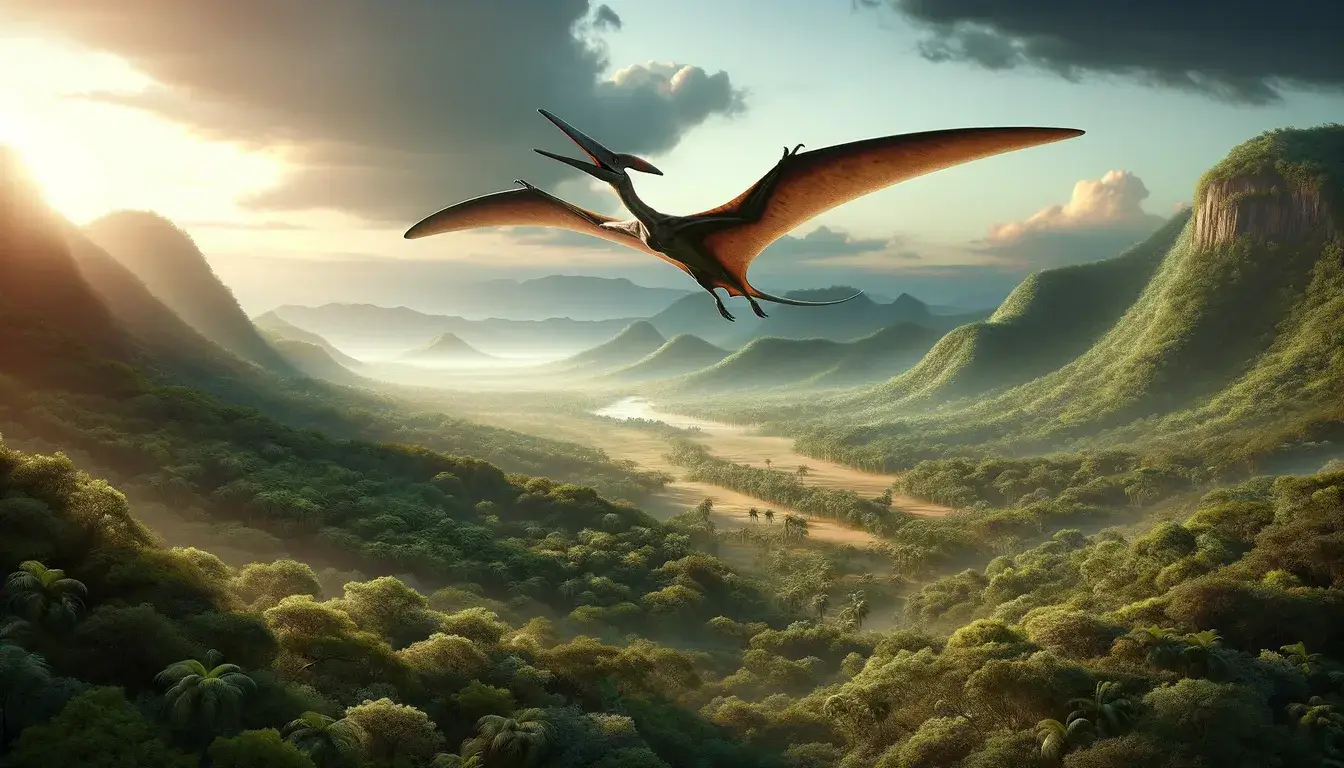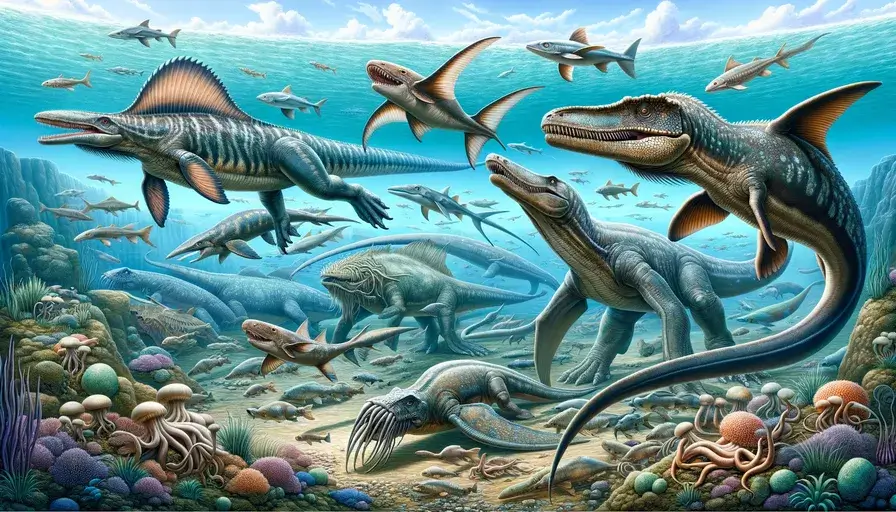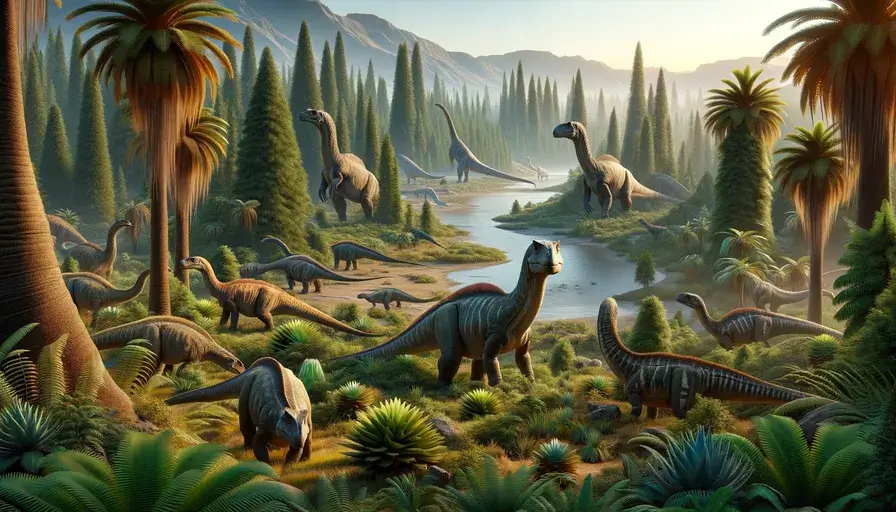Marine dinosaurs, also known as marine reptiles, were prehistoric reptiles that evolved to live in aquatic environments during the Mesozoic era. Their adaptations for marine life played a significant role in shaping the biodiversity of this era. The Mesozoic fossil record reveals numerous groups of marine reptiles, including Sauropterygia, Ichthyopterygia, Mosasauridae, and Chelonioidea (sea turtles). These groups exhibited a wide range of adaptations and diversity, with some lasting for over 150 million years.
| Main Point | Description |
|---|---|
| Adaptation to Aquatic Life | Marine reptiles, often referred to as marine dinosaurs, evolved to thrive in aquatic environments during the Mesozoic era. |
| Diversity in Adaptations | Their adaptations, which influenced the biodiversity of the era, included various swimming styles, diets, and reproductive biology. |
| Major Marine Dinosaur Lineages | Key lineages of marine reptiles included Sauropterygia, Ichthyopterygia, Mosasauridae, and Chelonioidea. |
| Occupying Diverse Aquatic Niches | These marine reptiles filled different ecological niches in aquatic ecosystems, including oceans, rivers, lakes, and coastal areas. |
| Advances in Paleontological Research | Ongoing research in paleontology is continually expanding our knowledge of these ancient marine creatures. |
Marine Dinosaurs: Sauropterygia and Ichthyopterygia
Two major lineages of marine reptiles that emerged during the Mesozoic era were Sauropterygia and Ichthyopterygia. These prehistoric aquatic dinosaurs developed unique adaptations that allowed them to thrive in marine environments.
1. Sauropterygia:
Sauropterygians, such as plesiosaurs, had distinctive features that set them apart from other marine reptiles. With their long necks and small heads, plesiosaurs had a body design optimized for underwater flying or rowing propulsion. They successfully inhabited oceans, rivers, lakes, and coastal regions, showing their adaptability to different aquatic habitats.
These reptiles were well-suited for hunting, as indicated by their flattened teeth, which were adapted for capturing and consuming hard-bodied prey. Plesiosaurs played a crucial role in shaping the marine ecosystem, occupying a niche as pursuit predators and feeding on fish, cephalopods, and other reptiles.
2. Ichthyopterygia:
Ichthyopterygians, resembling modern dolphins, possessed streamlined bodies and large eyes, allowing them to swim rapidly through the water. They appeared in the Early Triassic and survived for over 150 million years, exhibiting remarkable success as marine reptiles.
These aquatic dinosaurs were known for their pursuit predation, feeding on fish, cephalopods, and other reptiles. Their ability to swiftly navigate and capture prey in marine ecosystems made them formidable hunters. Fossil evidence suggests that some species of ichthyopterygians gave birth to live offspring, further highlighting their unique reproductive biology.
Overall, both Sauropterygia and Ichthyopterygia demonstrate the remarkable adaptations and diverse lifestyles of marine dinosaurs during the Mesozoic era.
| Features | Sauropterygia | Ichthyopterygia |
|---|---|---|
| Body Shape | Long neck and small head | Streamlined body |
| Hunting Strategy | Pursuit predators feeding on fish, cephalopods, and other reptiles | Pursuit predators feeding on fish, cephalopods, and other reptiles |
| Reproductive Biology | Some species gave birth to live offspring | Some species gave birth to live offspring |
| Survival Duration | Lasted for more than 150 million years | Lasted for more than 150 million years |
The comparison table above highlights the similarities and shared characteristics between Sauropterygia and Ichthyopterygia. Both lineages had distinct body shapes and employed pursuit predation as their hunting strategy. Additionally, these marine reptiles exhibited similar reproductive biology and enjoyed longevity as successful aquatic dinosaurs.
Marine Dinosaurs: Mosasauridae and Chelonioidea
Mosasauridae and Chelonioidea were two fascinating groups of marine reptiles that thrived during the Mesozoic era. Mosasauridae, commonly known as mosasaurs, were highly successful predators with long, slender bodies and paddle-like limbs. They inhabited marine environments and were renowned for their pursuit predation, feeding on a variety of prey including fish, turtles, and other marine reptiles. The unique adaptations of mosasaurs allowed them to excel in their hunting abilities and dominate the marine ecosystems in which they lived.
Chelonioidea, on the other hand, encompasses the group of marine reptiles known as sea turtles. These prehistoric creatures evolved during the Late Cretaceous and became long-lasting marine reptiles. Sea turtles are known for their remarkable ability to traverse the pelagic environments while still laying eggs on land. Their distinctive adaptations, including flipper-like limbs and streamlined shells, made them well-suited for a life in the oceans. With their remarkable endurance and adaptability, sea turtles were able to survive for millions of years in various marine habitats.
| Marine Dinosaurs: Mosasauridae and Chelonioidea | |
|---|---|
| Scientific Name | Adaptations |
| Mosasauridae | – Long, slender bodies – Paddle-like limbs for propulsion – Adapted for pursuit predation – Feeding on fish, turtles, and other marine reptiles |
| Chelonioidea (Sea Turtles) | – Flipper-like limbs for swimming – Streamlined shells for hydrodynamics – Ability to lay eggs on land – Adapted for life in pelagic marine environments |
The evolution and success of both Mosasauridae and Chelonioidea are remarkable examples of the adaptability of marine reptiles to different ecological niches. These marine dinosaurs developed unique characteristics and behaviors that allowed them to thrive in their respective habitats. Studying the fossil record and paleontological findings has provided valuable insights into the biological and evolutionary history of these mesmerizing ancient creatures, shedding light on their remarkable adaptations and lifestyles.
Marine Dinosaurs: Adaptations and Lifestyles
Marine dinosaurs, also known as marine reptiles, developed a range of remarkable adaptations to thrive in aquatic environments. These adaptations allowed them to effectively navigate and swim underwater, making them well-suited for life in the oceans, rivers, lakes, and coastal regions. By studying the fossil record and paleontology, scientists have gained valuable insights into the evolutionary history and behavior of these ancient creatures.
Some of the key adaptations observed in marine dinosaurs include streamlined body shapes, powerful flippers or tails for propulsion, specialized respiratory systems, and the ability to maintain high metabolism. These adaptations enabled marine dinosaurs to excel in their respective niches and become apex predators within their ecosystems. Their diets varied depending on factors such as size, habitat, and evolutionary lineage. Many species were fierce hunters, feeding on fish, squid, and other marine creatures.
Marine dinosaurs encompassed a diverse range of prehistoric reptiles, including plesiosaurs, ichthyosaurs, mosasaurs, and sea turtles. Each group had its own unique adaptations and lifestyles. For instance, plesiosaurs, characterized by their long necks and small heads, employed underwater flying or rowing propulsion. Ichthyosaurs, resembling sleek dolphins, had streamlined bodies and large eyes that allowed for rapid swimming. Mosasaurs, with their long, slender bodies and paddle-like limbs, were highly successful predators. Sea turtles, a group that evolved during the Late Cretaceous, demonstrated the ability to invade pelagic environments while still nesting on land.
| Marine Dinosaur Groups | Main Adaptations | Lifestyles and Diets |
|---|---|---|
| Plesiosaurs | Long neck, small head, underwater flying or rowing propulsion | Feeding on hard-bodied prey |
| Ichthyosaurs | Streamlined body, large eyes for rapid swimming | Pursuit predation on fish, cephalopods, and other reptiles |
| Mosasaurus | Long, slender body, paddle-like limbs | Predation on fish, turtles, and other marine reptiles |
| Sea Turtles | Adaptation for pelagic environments while nesting on land | Feeding on various marine resources |
Through their remarkable adaptations and diverse lifestyles, marine dinosaurs left a significant impact on the biodiversity of the Mesozoic era. Ongoing research in paleontology continues to uncover new discoveries, providing further insights into the evolution and behavior of these extraordinary ancient creatures.
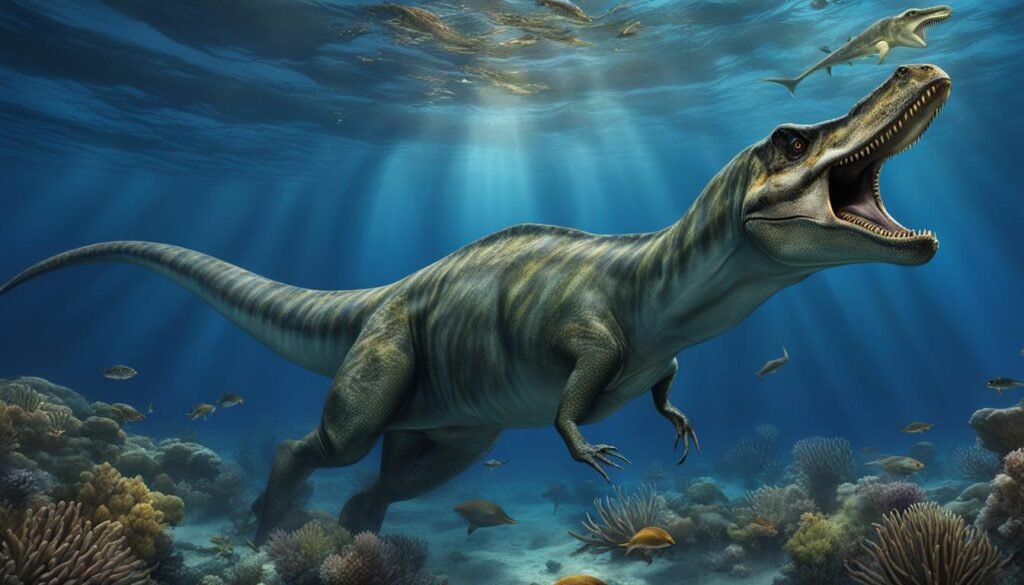
Conclusion
Marine dinosaurs were fascinating prehistoric reptiles that thrived in aquatic environments during the Mesozoic era. Their evolution and adaptations played a vital role in shaping the biodiversity of this era, leaving a lasting impact on marine life.
With their diverse characteristics and unique adaptations, these marine reptiles successfully navigated and hunted in various aquatic habitats. Their streamlined body shapes, powerful flippers or tails, and specialized respiratory systems allowed them to thrive as apex predators in marine ecosystems.
Through the study of fossil records and ongoing research in paleontology, we continue to gain valuable insights into the evolution and behavior of these ancient creatures. Discoveries of new species and advancements in technology enable us to uncover more about the fascinating world of marine dinosaurs. They are a testament to the remarkable diversity and adaptability of prehistoric reptiles.
As we delve deeper into the mysteries of marine dinosaurs, our understanding of their evolutionary history and their role in the ancient marine ecosystems continues to expand. These majestic creatures have left an indelible mark on the history of life on Earth, and their story continues to captivate scientists and enthusiasts alike.

